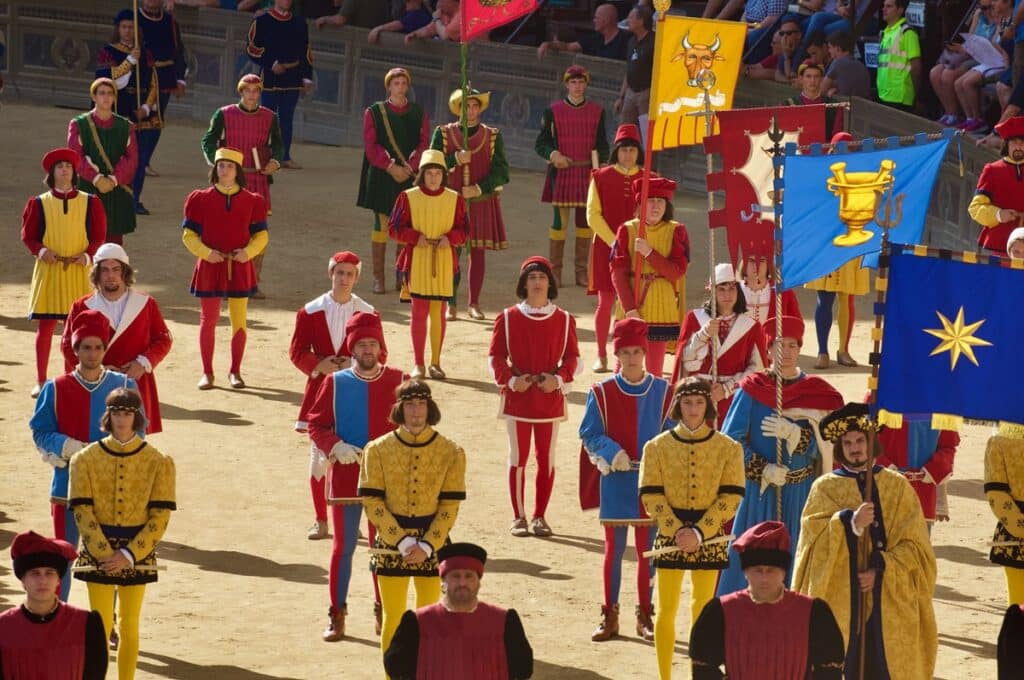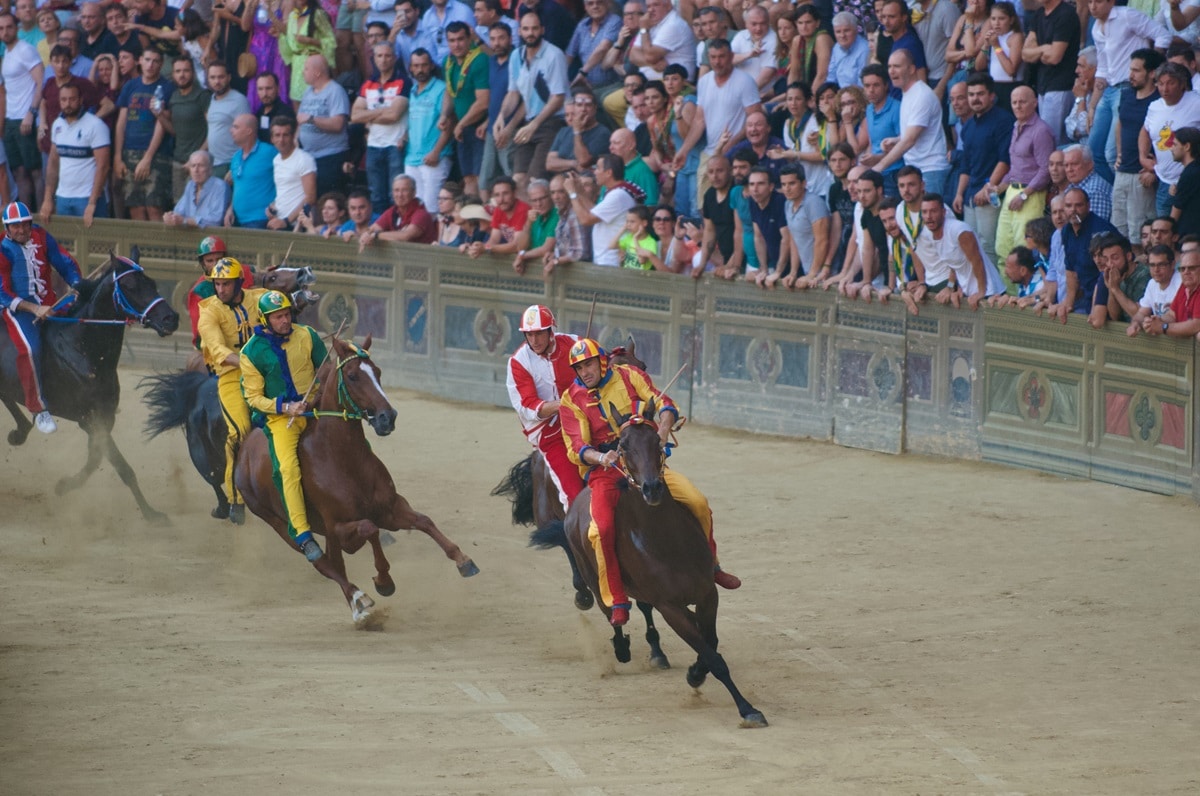Table of Contents
In this article, I share my firsthand experience of Siena’s Palio, where bareback riders race at breakneck speed around Piazza del Campo before a roaring crowd. From the medieval pageantry to the fierce rivalries between contrade, I discovered why this centuries-old tradition is Italy’s most thrilling and unforgettable spectacle.
The Italian cavalry charges directly at me, swords gleaming in the sunlight.
Twelve furious stallions thunder into a full gallop, their nostrils flaring with every powerful stride. The sheer force of their charge sends a shiver down my spine. My instincts scream, “Get to safety!” but my feet remain rooted to the spot.
I’m caught in Turn 2 of the Piazza del Campo in Siena, squeezed among a sea of fervent Senesi on a wooden platform that I had to climb through a window to reach.
“Pazzo, si?” a man beside me asks. Crazy, right?
Welcome to the Palio di Siena, the world’s oldest horse race—and quite possibly the most exhilarating.
Having witnessed the World Series, the Indy 500, the US Open (both golf and tennis), the Sugar Bowl, and the Army-Navy game, none of them compare to the fervor, spectacle, and chaos of the Palio. This event is a unique chance to step back in time.
While much has changed over the past 400 years, the Palio remains remarkably consistent. The race still takes place in the heart of town, jockeys ride bareback, and the start of the race is still signaled by a thunderous 16th-century cannon.
Siena is split into 17 neighborhood districts, known as contrada. Ten of these contrade enter a horse in the race, and the competition is intense. The ultimate goal is for your contrada to win, but a close second is to see your rival contrada lose.
The race itself—three perilous laps around the stunning Piazza del Campo—is just a part of the four-day extravaganza.
The day kicks off with the cavalry’s arrival, shaking the crowd with their dramatic, albeit intimidating, charges (as described earlier).

Following this is the Corteo Storico, a two-hour parade featuring archers, horsemen, drummers, and nobles clad in medieval and Renaissance garb—each representing a contrada.
Spectators crowd together in the infield, cling to balconies, pack bleachers, or peer through windows for a glimpse of the action. By the time the race begins, the 40,000-strong audience is in a frenzy—shouting, gesturing, pleading, and cursing (and that’s just the women).
Piazza del Campo wasn’t designed as a racetrack. Its irregular shape, with walls jutting at odd angles, adds to the peril. Though padded for the horses’ safety, these walls can still cause collisions. In the chaos, bareback jockeys sometimes get thrown off their horses. The race is won by the first horse to cross the finish line, with or without its rider.
The winning contrada’s supporters surge onto the track, waving flags and shedding tears of joy. They celebrate with the jockey, lifting him onto their shoulders and singing triumphantly. The victorious horse is even paraded into a church for a blessing. Pazzo? Si. Unforgettable? Certamente.
Frequently Asked Questions (FAQs)
What exactly is the Palio di Siena?
The Palio is a historic horse race held twice a year (July 2 and August 16) in Siena, Italy. Ten riders, representing the city’s contrade (neighborhoods), race bareback around Piazza del Campo in a tradition that dates back to the Middle Ages.
How many contrade compete in the race?
Although Siena has 17 contrade, only 10 compete in each Palio—seven that didn’t race in the previous year and three drawn by lottery. This rotation keeps rivalries alive and ensures every contrada has its turn.
What’s the best way for visitors to watch the Palio?
The race is free to watch from the center of Piazza del Campo, but you’ll need to arrive hours early and expect large crowds. For a less crowded view, many visitors book seats in grandstands or even balconies overlooking the square, though these must be reserved well in advance.
Is the Palio just a horse race?
Not at all—it’s an entire cultural event. Leading up to the race, the city bursts with medieval parades, flag-throwing performances, and neighborhood feasts. The Palio is as much about tradition, rivalry, and community pride as it is about the thrilling two-minute race.




